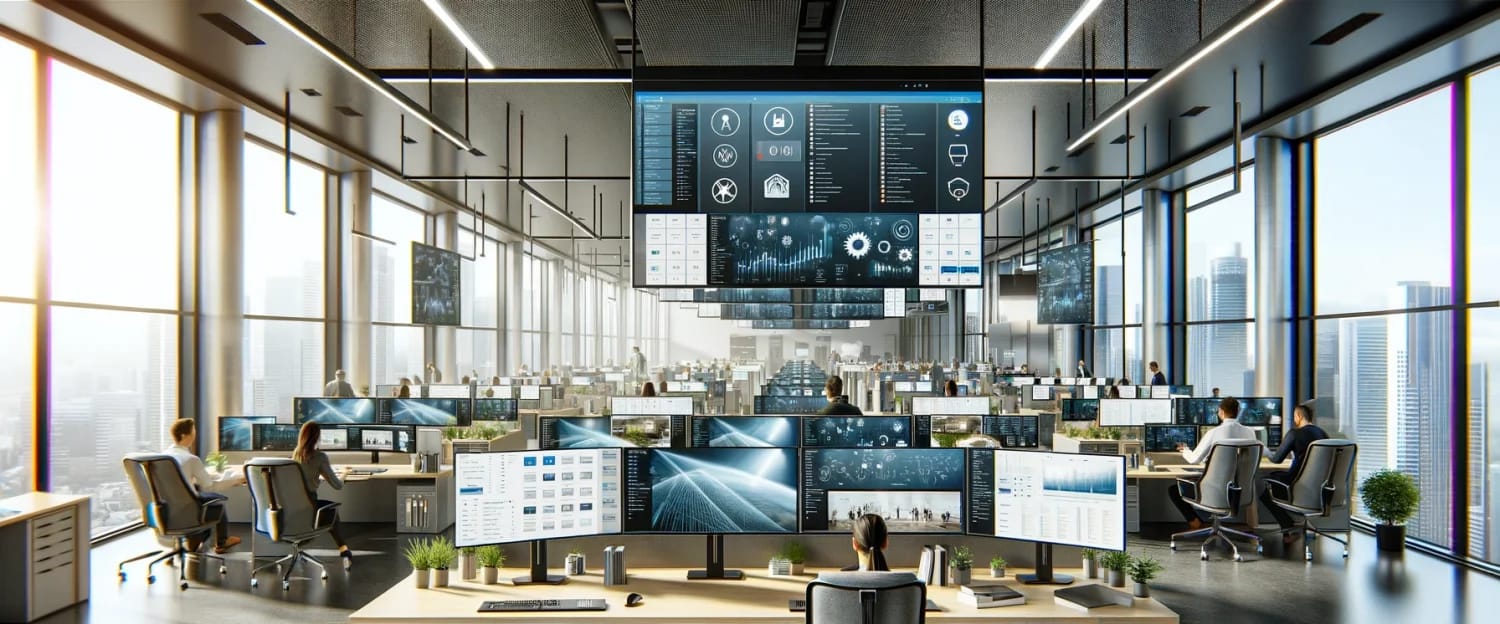In the era of growing ecological awareness and corporate social responsibility, companies are increasingly seeking innovative solutions that will help them achieve sustainable development goals. One such area is information technology, particularly desktop virtualization (VDI) and thin client terminals. In this article, I will attempt to prove the thesis that the use of these technologies can significantly contribute to the implementation of ESG (Environmental, Social, Governance) strategies in enterprises.
What are VDI and thin client?
To understand how VDI and thin client can support the ESG strategy, it is first necessary to explain what these technologies are. VDI (Virtual Desktop Infrastructure) is a solution that allows for the virtualization of users’ work environments. It involves moving operating systems, applications, and data from desktop computers to a data center. Users gain access to their virtual desktops through any device, such as a computer, laptop, tablet, or smartphone, connected to the network.
A thin client, on the other hand, is a type of endpoint device used to display the user interface of a virtual desktop. Unlike traditional desktop computers, thin client terminals do not have their own hard drive, RAM, or processor. Their main task is to process input data (e.g., from a keyboard and mouse) and display output data (image on the monitor). All processing takes place on servers in the data center.
Impact of VDI and thin client on the environment
The use of VDI and thin client technologies can bring a range of environmental benefits that align with the ESG strategy. First and foremost, desktop virtualization allows for a significant reduction in electricity consumption. Traditional desktop computers consume a lot of power as they need to power all their components, such as the processor, hard drive, and graphics card. Meanwhile, thin client terminals consume up to 90% less energy because they do not have their own components and are only used to display images.
Moreover, thanks to VDI, the lifecycle of endpoint devices can be significantly extended. Desktop computers usually need to be replaced every 3-5 years as software development increases hardware requirements. In the case of thin clients, which operate based on servers, this necessity practically does not exist. Terminals can function efficiently for up to 10 years, which translates into lower consumption of natural resources needed to produce new equipment and a reduction in electronic waste.
Desktop virtualization also reduces the need for office space. With VDI, employees can use any device from any location, as long as they have Internet access. This means that companies do not need to maintain an extensive IT infrastructure in offices, which translates into space and energy savings needed to power and cool server rooms. Additionally, this technology promotes remote and hybrid work, allowing employees to reduce commutes to the office and thus reduce CO2 emissions associated with transportation.
Social and governance aspects
In addition to environmental benefits, VDI and thin clients can also support the social and governance aspects of the ESG strategy. Firstly, desktop virtualization increases employee flexibility and mobility. With access to a virtual work environment from anywhere, employees can more easily balance work and personal life, leading to greater satisfaction and engagement. Moreover, VDI facilitates the employment of people with disabilities or those living in remote locations, contributing to increased diversity and inclusivity in the workplace.
Secondly, the use of VDI and thin clients enhances the security of company data. Since all information is stored and processed on servers in the data center, rather than on endpoint devices, the risk of data leakage or theft is significantly reduced. This is particularly important in the context of personal data protection regulations, such as GDPR. Companies that prioritize the security of their customers’ and employees’ information build a positive image and social trust.
Thirdly, the implementation of VDI and thin clients can contribute to the optimization of IT costs in the company. Thanks to the centralization of user workspace management, the IT department can more efficiently deploy new applications, update systems, or respond to problem reports. This translates into time and human resource savings. Furthermore, thin client terminals are cheaper to purchase and maintain than traditional desktop computers, which allows for a reduction in hardware costs. The company can allocate the saved funds to other sustainable development initiatives.
Challenges and limitations
Of course, the implementation of VDI and thin client technologies is not without challenges and limitations. One of the main problems is the need for a stable and efficient network infrastructure. Because all processing takes place on servers and users connect to them via the network, any disruptions or delays in Internet performance can negatively affect work comfort. Companies must therefore ensure the proper design and maintenance of the network, which involves additional costs.
Another challenge is the issue of application compatibility. Not all programs work correctly in a virtualized environment, especially older ones or those heavily integrated with hardware. Before implementing VDI, it is necessary to thoroughly test all used applications for compatibility and possibly look for alternative solutions. This involves a time-consuming process of software analysis and migration.
Human factors are also significant. Employees accustomed to the traditional model of working on desktop computers may initially be reluctant to change. Using a virtual desktop accessible through a web browser or a thin client requires some adaptation and change of habits. Therefore, it is important to provide employees with appropriate training and technical support during the implementation of VDI.
Conclusion
In summary, I believe that the use of VDI and thin client technologies can significantly contribute to the implementation of ESG strategies in companies. These solutions bring tangible environmental benefits, such as reducing energy consumption, extending device lifecycle, and reducing CO2 emissions associated with commuting to work. At the same time, they support social and governance aspects by increasing workplace flexibility and inclusivity, ensuring data security, and optimizing IT costs.
Of course, the implementation of VDI and thin clients also involves certain challenges, such as the need to provide an efficient network infrastructure, application compatibility, and employee adaptation to the new work model. However, a properly planned and executed implementation process allows for minimizing these limitations.
Considering the growing importance of sustainable development in business, investing in technologies supporting the ESG strategy seems not only right but even necessary. VDI and thin client are solutions that allow companies to achieve environmental, social, and governance goals, contributing to building a competitive advantage and a positive image. In my opinion, organizations that ignore the potential of these technologies may lose significance in the eyes of customers, investors, and society in the future.

